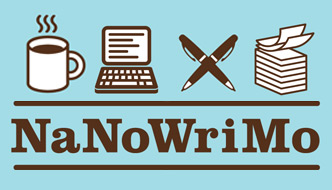National Novel Writing Month is an annual challenge that authors, whether published or aspiring, commit to every November. Their goal is to use the entire month to write a 50,000 word novel, which may either be a complete piece of work or the first 50,000 words of a novel that they can later continue.
The rules, according to the NaNoWriMo website, allow writers to plan and use extensive notes, so long as they do not incorporate any material they wrote before Nov. 1 into the body of the novel. The rules also state novels can be in any language and on any theme, from fanfiction, which is fiction that uses trademarked characters or settings, to novels in poetry format.
“This is my sixth year [participating in NaNoWriMo],” senior and Creative Writing Club president Emma Skinner said. “In middle school, my creative writing teacher introduced me to it, and it was the thing that taught me how to pace myself, work under deadlines and not self-edit so much, or even judge things I’m writing.”
First-time participants use the month of October to prepare for the challenge, which the internet writing community calls “Preptober.” During this month, NaNoWriMo.org provides resources under their “NaNo Resource Prep Library,” such as writing prompts, character planning sheets and how-to guides to help prepare writers for their upcoming project.
“I have a hard time working up the energy to actually write and not just plan, so I’m using NaNoWriMo as a way to push me into writing,” sophomore and first-time participant Clara Peyt said. “I’m happy but also a little nervous.”
Skinner said the most important part of NaNoWriMo is helping her create a foundation for her novels she can later build off of.
“The past two or three years I’ve done sequential fantasy novels that were connected to each other,” Skinner said. “So now I can go back and look at this whole anthology of work I’ve created, and it may not be good but it’s out there now, so I have something to work with.”
The goal of the writing challenge is not for writers to finish a full-fledged novel by the end of the month, but rather to commit to writing approximately 1,667 words a day to reach their word count. Skinner said NaNoWriMo is more about getting a novel done than getting it done well.
“You get better every year at not editing yourself and learning to roll with how wild of a month it is,” Skinner said.
Participants can also find designated regions on the NaNoWriMo website based on their location. Each region has two assigned municipal liaisons who lead a series of write-ins at local bookstores, coffee shops or fast food restaurants, with the aim of building a local community of writers that can come together to support each other and socialize.
Senior and Poetry Club president Alex Hedda is participating in NaNoWriMo for his second year. He said he enjoys the challenge because it gives him a reason to work on writing.
“The best thing NaNoWriMo [helps someone with] is just getting them to write,” Hedda said. “I think a lot of writers fall into this trap of infinite planning and thinking of the perfect story, but I think the best [way] to improve your writing is to just write, which is something NaNoWriMo helps you with.”nanowrimonanowrimo
2018-11-27

